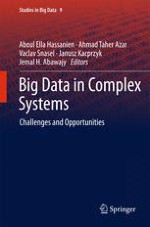2015 | OriginalPaper | Buchkapitel
Classification of ECG Cardiac Arrhythmias Using Bijective Soft Set
verfasst von : S. Udhaya Kumar, H. Hannah Inbarani
Erschienen in: Big Data in Complex Systems
Aktivieren Sie unsere intelligente Suche, um passende Fachinhalte oder Patente zu finden.
Wählen Sie Textabschnitte aus um mit Künstlicher Intelligenz passenden Patente zu finden. powered by
Markieren Sie Textabschnitte, um KI-gestützt weitere passende Inhalte zu finden. powered by
This paper presents the new automated classification method for electrocardiogram (ECG) arrhythmia. Electrocardiogram datasets are generally called as big data. Big Data are the group of huge volumes of unstructured data. Big Data means enormous amounts of data, such large that it is difficult to collect, store, manage, analyze, predict, visualize, and model the data. Electrocardiography deals with the electrical movement of the heart. The order of cardiac health is given by ECG and heart rate. A study of the nonlinear dynamics of electrocardiogram (ECG) signals for arrhythmia characterization is considered in this work. Cardiac problems are considered to be the most deadly disease in medical world. Cardiac arrhythmia is abnormality of heart rhythm, in fact refers to disorder in electrical conduction system of the heart. In this paper, computerized ECG interpretations are used to identify arrhythmias. It is a process of ECG signal acquisition, eliminating noise (De-noising) from ECG signal, detecting wave parameters (P, Q, R, S and T) and rhythm classification. Substantial progress has been made over the years in improvising techniques for signal conditioning, extraction of relevant wave parameters and rhythm classification. However, many problems and issues, especially those related to detection of multiple arrhythmic events using soft computing techniques is still need to be addressed in a broader manner to improve the prospect of commercial automated arrhythmia analysis in mass health care centres. The main objective of this paper is to present a classifier system based on Bijective soft set in order to classify ECG signal data into five classes (Normal, Left bundle branch blocks, Right bundle branch blocks, premature ventricular contractions and Paced rhythm class). To complete this objective, an algorithm for detection of P, QRS and T waves are applied followed by IBISOCLASS Classifier. The experimental results are acquired by examining the proposed method on ECG data from the MIT-BIH arrhythmia database. The proposed algorithm is also compared with the well-known standard classification algorithms namely Back propagation network (BPN), Decision table, J48 and Naïve Bayes.
